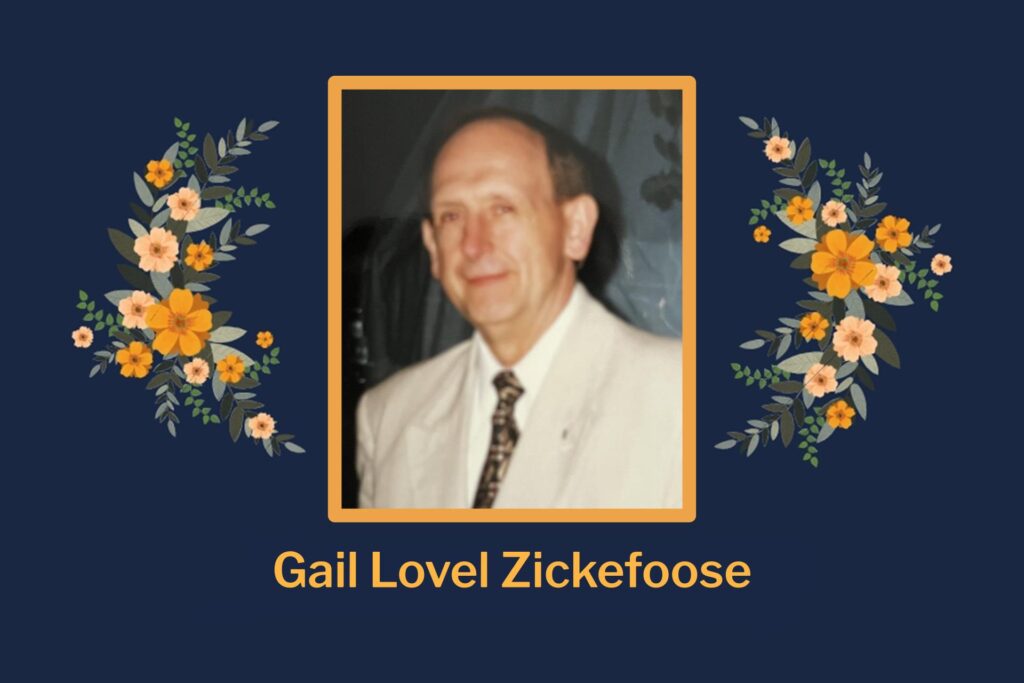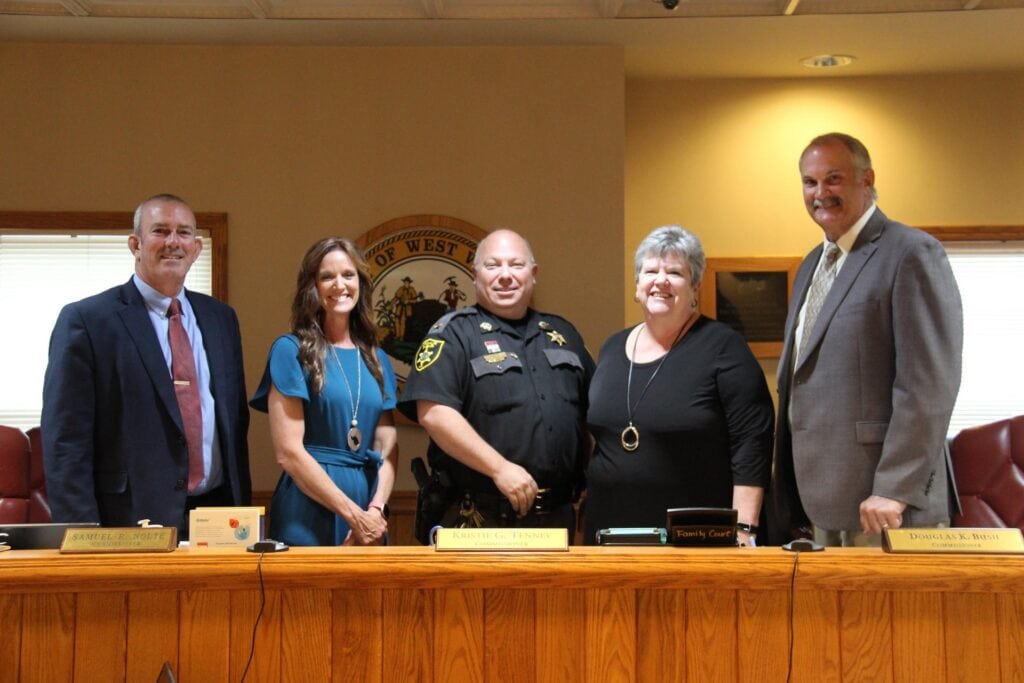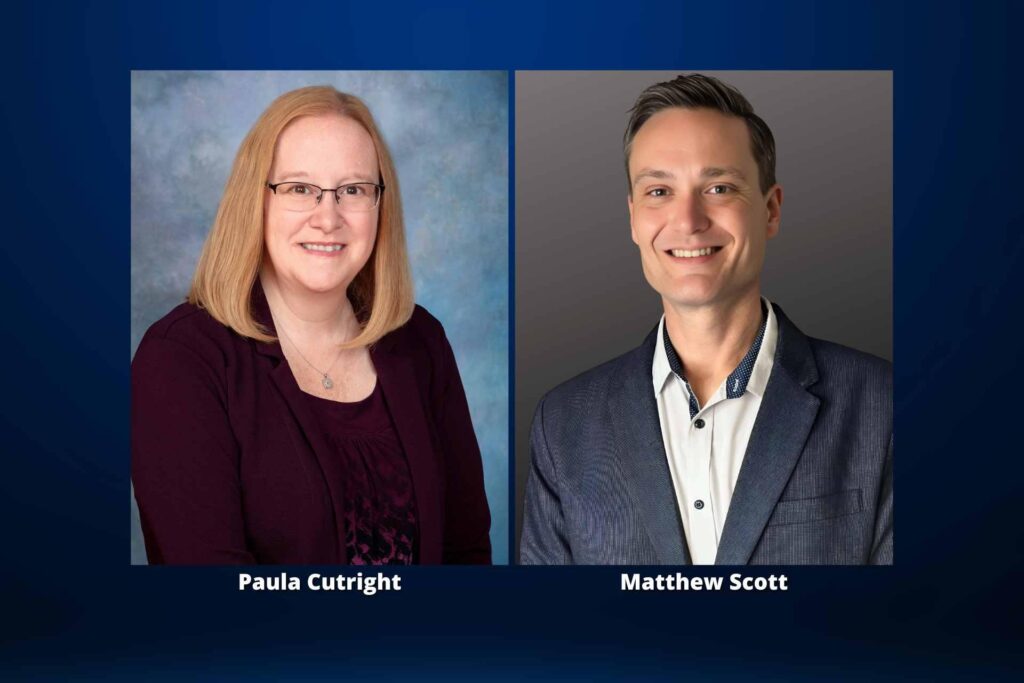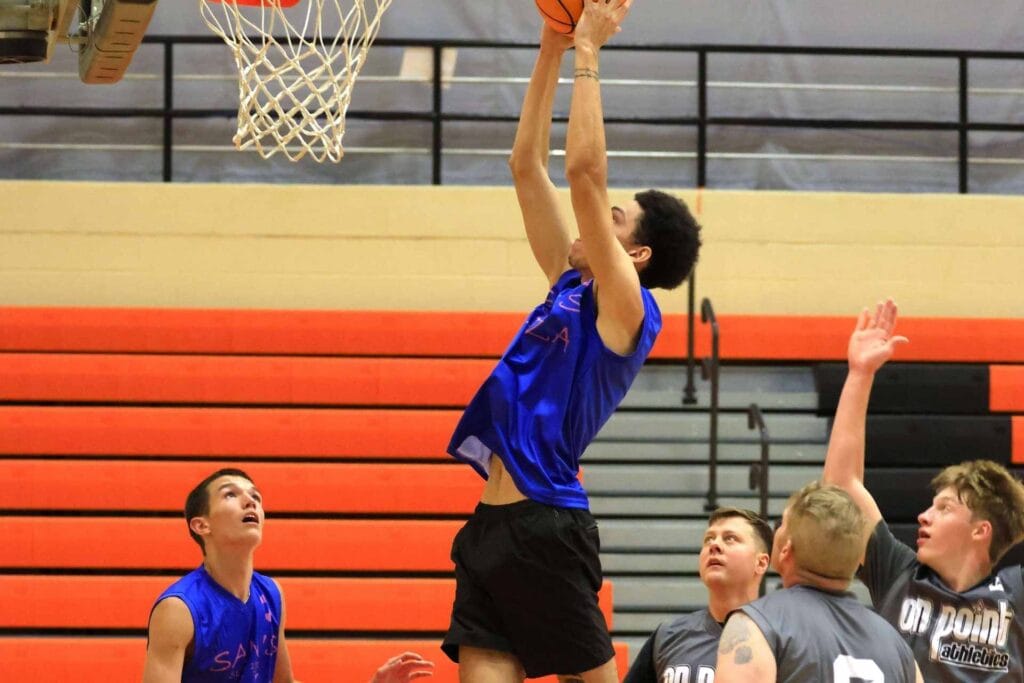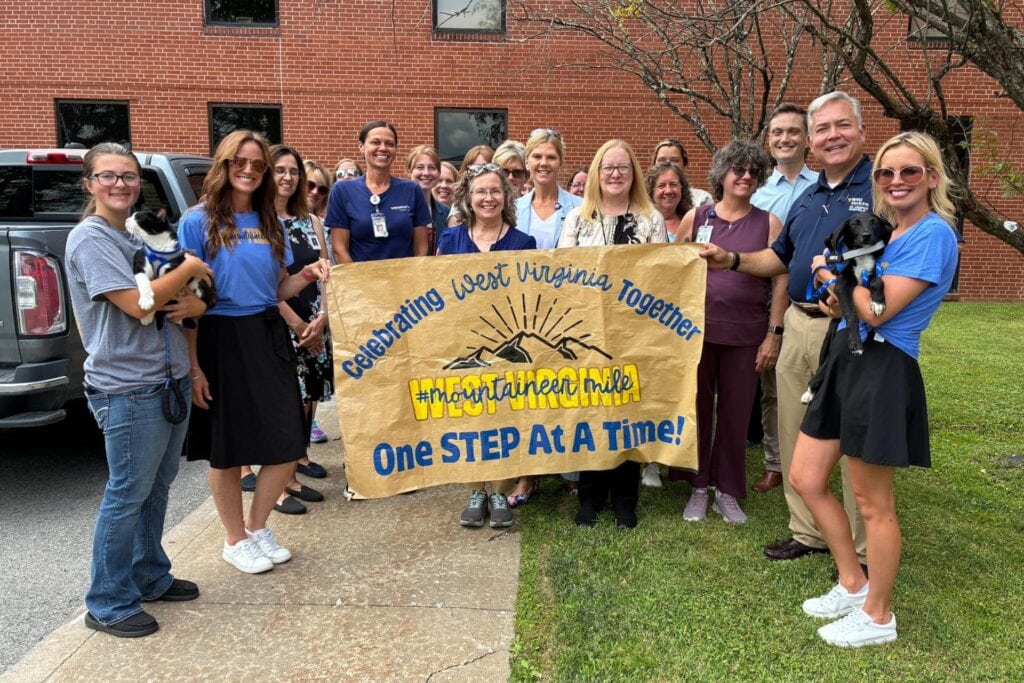Trail boosters used a 1996 study to make the case for West Virginia’s Hatfield-McCoy trail system. But counties haven’t seen the predicted numbers of jobs and spending, partially due to a lack of investment in visitor lodging.
Editor’s note: This story was originally published by Mountain State Spotlight. Get stories like this delivered to your email inbox once a week; sign up for the free newsletter at https://mountainstatespotlight.org/newsletter
By Duncan Slade, Mountain State Spotlight
When John Fekete’s father suggested he give up his lumber yard job for a new career building a network of four-wheeler trails as part of southern West Virginia’s Hatfield-McCoy system, Fekete thought his old man was crazy.
“Why would I do that?” he remembered telling his father.
“I make good money, have health insurance,” Fekete, then 23, said at the time. “Shoot, I just bought a four-wheeler and a Jet Ski.”
But the elder Fekete pointed to a newspaper article about a recent economic impact study of the off-road trail. It predicted the trail would be huge: creating thousands of jobs and bringing millions of tourism dollars into the local economy.
John Fekete was skeptical, but couldn’t stop thinking about it. So the next day, he quit the lumber yard job. After he graduated from college with a parks and recreation degree, he got a job building the initial 300-mile trail system. “It was 10-12 hour days of brutal work, putting signs in the ground, cutting trees,” Fekete says.
Now, he’s the deputy director at the Hatfield-McCoy Regional Recreation Authority, overseeing maintenance on the 1,000-mile system.
The project and its more than 400 jobs are frequently touted as an example of West Virginia’s tourism business, and how the state could continue a pivot to an economy that relies more heavily on out-of-state visitors as the traditional extraction industries continue to decline.
But two decades after that newspaper story convinced Fekete to change careers, most of what was promised in those early economic forecasts hasn’t materialized.
And while the trails have created new jobs, the money has arrived much slower and in much smaller amounts than originally promised.
Projections that fell short
In the late-1980s, then-U.S. Rep. Nick Rahall pushed to find out if a proposed trail system in southern West Virginia might provide tourism jobs to help the local economy become more diverse.
The Democratic congressman amended federal legislation to require that the U.S. Army Corps of Engineers facilities in southern West Virginia encourage recreation, something not previously in the Corps’ mission. After the change, the Huntington District of the Corps created a master plan for a proposed trail system.
The predictions were impressive.
The 1996 analysis done for the Army Corps by Kentucky-based consultants Booker Associates found there was demand for just under 650,000 annual single-day visitors on ATV trails. The initial 300-mile trail system would have capacity for less than half of that: the consultants estimated it could accommodate about 300,000 visitors to seven West Virginia counties.
The consultants predicted a nearly $52 million boost to the economies of Boone, Lincoln, Logan, McDowell, Mingo, Wayne and Wyoming counties from the initial 300 miles of trails. Spending by visitors would create more than 1,500 jobs in the region.
The news was received with excitement. Rahall said at the time that the study showed the Hatfield-McCoy project was on its way to becoming a “stunning reality:” one that could help replace coal industry jobs, already on the decline.
“My friends, the future is bright, the future is bold, for us in southern West Virginia,” Rahall said to the trail development coalition at a dinner in Charleston in 1996. He added that the trails would bring the kind of economic opportunities seen with West Virginia’s skiing and rafting attractions further east.
And these original projections were based only on a 300-mile demonstration trail. The report estimated the system’s full vision — 2,000 miles — would transform the area, creating a total of 3,254 jobs.
These numbers played a pivotal role in the years to come, as politicians and economic development officials pushed for an initial $2.5 million in state funding.
Promoters of the trail system conducted a public pressure campaign on then-Gov. Cecil Underwood: calling the effort “Now It’s Our Turn,” they erected billboards and hung posters and banners. Thousands of people wrote letters to the governor in support of the project. An Atlanta man sent a $25 check for the trails to Underwood, writing that he would come ride, tell his friends, and that the governor “will be surprised at the jobs that will be created by the trail.”
Officials in the seven counties compiled a book of public support for the project, then 150 people packed into the governor’s reception room to deliver it.
At a dinner in his honor at a new steakhouse in Wyoming County, Underwood stood up to speak after a hearty meal of prime rib, baked potato and salad.
Wearing a red rose boutonnière, he endorsed the proposed 2,000-mile Hatfield-McCoy trail plan, saying it showed “great promise.”
“Tourism is the fastest growing industry in the state,” Underwood told the gathered crowd of almost 100 people and economic development officials at the dinner. “The good thing about tourism is that it doesn’t take a mammoth investment to keep it going.”
Fast forward to 2021. Trail mileage has soared to about 1,000 miles, more than three times the length for the initial demonstration project. But the project’s economic impact hasn’t measured up. The trail has created only 430 jobs, barely one-quarter of the number that the Army Corps study promised for the smaller demonstration project, according to a 2020 report from Marshall University researchers.
The jobs number isn’t the only one that’s fallen short. Researchers estimate the system brings $43.3 million to the state annually. Now, with more than three times the initial trails, the economic impact is just beginning to approach the annual $51.7 million that was predicted from the 300-mile demonstration trail.
How were the initial projections so wrong?
A key mistake — and one that’s still reverberating throughout the system — was a miscalculation in who would be interested in riding the trails. The Army Corps report assumed that nearly all — 80% — of day users would come from nearby counties.
In reality, the opposite occurred. Eighty-five percent of trail riders live outside West Virginia.
“Absolutely one of the reasons that these numbers have not come to fruition is they would have had to have been daytrippers coming into the marketplace,” said Jeffrey Lusk, executive director of the Hatfield-McCoy Regional Recreation Authority. “And for those folks to come into the marketplace, they would have had to have not had a place to ride where they were at, which is not the case for people in southern West Virginia, southwest Virginia and eastern Kentucky.”
While the percentage of out-of-state tourists is much higher than predicted, the sheer number of visitors isn’t as high as it could be. Out-of-state visitors need places to stay — and the lack of lodging options along the Hatfield-McCoy trail has been a major factor in stunting the area’s economic growth.
No room at the inn
Gilbert was absolutely packed.
On an October day in 2004, Vivian Livingood and her husband walked down to the Mingo County town’s National TrailFest, a weekend of trail riding, live music, manufacturer demonstrations and off-road events that brings in thousands of trail riders. At that point, Gilbert, population 364, had hosted the annual celebration for four years.
Livingood and her husband owned a car lot outside of town. She said they were shocked at the size of the crowd, so they asked a group of trail riders: What do we need here?
The riders’ response: more places to eat and more places to stay.
Over the next few months, Livingood and her husband shut down the car lot and built ATV lodges on the property. They now own six cabins.
“What we tried to portray to everyone in town is, although not everyone likes four-wheelers running up and down the streets, it keeps restaurant workers working,” said Livingood, who went on to be Gilbert’s mayor for more than a decade. “It keeps gas stations going. It keeps those lodges open. They eat and they buy supplies. So, it’s just good for the whole picture.”
The town was one of the first connected to the trail system. At the time, there was only one motel where trail riders could stay.
Today, downtown Gilbert is lined with ATV lodges, and this year will mark the 20th anniversary for TrailFest.
In Gilbert and other Hatfield-McCoy towns, that change didn’t happen overnight.
Lusk said early planning for the trail system was like the baseball film “Field of Dreams”: If you build it, they will come.
“I think the ideal was that the private sector is just going to come in from every direction and just build, build, build, build, build, build, build, and it was much more of a trickle than a flood,” he said.
At the time, they were so fixated on getting the trails built that, Lusk said, growing small businesses “slipped through the cracks.”
The first trail systems opened in 2000 and every year since, the trail authority has sold more trail permits than the previous year.
In 2020, the trail authority sold almost 65,000 trail permits, a 43% increase from five years ago, and Lusk says they’re on pace to sell upwards of 80,000 permits in 2021. Each one of those permits represents a unique visitor to the area, with some visiting multiple times in a year.
“Our glass ceiling is simply on a given weekend, we’ve got vastly more people that want to come here during the season than we’ve got places for them to stay,” Lusk said. “And those lodging investments have come but they’ve come at a very anemic pace.”
But while the trails have provided a lifeline for Gilbert, they haven’t replaced the role coal played in the local economy.
Coal mining employs just under 800 people in Mingo County, according to 2018 numbers from the statewide coal association: a more than 50% drop from the county’s coal employment a decade before.
In this one county alone, coal wages are estimated by the coal association to be $47.4 million, greater than the entire Hatfield-McCoy Trails’ contribution to the state’s economy.
“We all knew that coal was not going to be able to carry us,” said current Gilbert Mayor Jennifer Miller, a former school teacher and the owner of two cabins for ATV riders. “And I hope to see the day that this tourism carries us. It will be hard to compete with what coal was done for this area. Coal provided a whole lot of very good paying jobs for a lot of the kids that I taught in school every day. That’s what was putting the clothes on the back and the food on the table. And I would love to see the day that tourism is able to provide that type of income.”
So far, ATV tourism remains supplemental income — not full time employment — for many lodging operators.
“It’s a wonderful help,” Miller said, citing beautification, new residents and visitors. “However, it would be wonderful if we had some type of an industry that really could provide those jobs that working men, working women need to support their family.”
‘The missing piece’
It took 20 years for Gilbert to build up the lodging base to support out-of-state visitors. Trail authority officials, town residents and economic development officials say that small business growth in Hatfield-McCoy towns needs two things: local buy-in and access to capital.
“Access to capital was definitely, and has always been, a huge hurdle to overcome,” said Christy Laxton, executive director of the Wyoming County Economic Development Authority.
The banking industry is conservative and is hesitant to fund tourism businesses in southern West Virginia, Laxton said. The Wyoming County EDA has limited funds available; the agency relies on a rotating loan fund and when money comes in, it’s usually loaned right back out.
“Somebody might come in and they need a huge investment for a lot of cabins,” Laxton said. “And we don’t have that amount of money. We may have $50,000 to help the project, but they may need a $500,000 project.”
She said there’s a need for more non-traditional lenders willing to loan to the entrepreneurs that the banks aren’t willing to take a risk on.
It’s only relatively recently that the state has gotten serious about building up the business ecosystem around the Hatfield-McCoy trails. Five years ago, the trail authority partnered with the Southern West Virginia Community and Technical College and created an entrepreneurship center with small business coaching and other services.
“That was the missing piece,” Lusk said. “But that’s not really our role. We just did it out of just utter and complete frustration.”
At the same time, a non-traditional lender — National Capital Investment Fund — got a federal grant to create a $4 million loan fund for tourism businesses in Hatfield-McCoy towns. Since then, it’s unlocked an additional $8.7 million in private loans for more than a dozen businesses, primarily lodging.
One of the reasons large investors have been wary is the limited market size. Bryan Shaw, who directed the entrepreneurship center for three years, said taking into account weather and the fact that most visitors stay for a long weekend, there are just over one hundred nights for lodging businesses to generate revenue.
Getting visitors to stay longer would unlock more investment, Shaw said.
“It’s almost like a chicken-and-egg moment, I guess,” he said. “We need five nights to justify some of the investments, right? But we need the investment to get to five nights.”
To get visitors to stay longer, the Hatfield-McCoy trail system needs things to offer riders things to do when they’re not riding.
A 2019 survey of trail riders found more than half of them wanted more food and drink options. Forty percent said they wanted more brew pubs and around 30% said they’d like to zipline or go fishing during their trip.
“Nobody wants to come to Southern West Virginia and — with all due respect — eat McDonald’s,” said Kristina Joyce, former head of the West Virginia Small Business Development Council and creator of the entrepreneurship center program. “They want biscuits and gravy. They want to feel that local color. And I think that’s important for people to realize when we’re talking about rejuvenating Appalachia as an economy.”
ATV resorts can build all of this in one multimillion-dollar step. These resorts are one-stop shops for tourists, usually consisting of a couple dozen cabins, RV spots, a restaurant and an ATV rental service.
In the coming years, three large ATV resorts — financed by the land companies that own the land on which the trails are built — are set to open. These projects require a lot of money to get started and are dependent on private investment.
Finally, a gradual lifeline
On a late July day in downtown Mullens, a family of ATV riders rolled past the old Wyoming Hotel, where John F. Kennedy stayed during his pivotal 1960 Democratic presidential primary campaign.
Today, the five-story hotel sits empty. Many beds in the 68 rooms are still made, though the green-painted walls are peeling and ceiling bits have fallen to the floor.
Mullens was a bustling coal community until the 1980s, with a 12-track railyard that employed many town residents.
Where once the trains roared and whistled at all hours of the day and night, the streets of Mullens echo with a new sound: gas-powered ATV motors run by out-of-state visitors flush with valuable tourism dollars.
The town was connected to the trail system in 2008, but local entrepreneur Jason Mullins says it took time for the town to embrace being “ATV-friendly.”
“I think it took a little while for everyone to see exactly how great of an impact this was going to have,” Mullins said. “And the type of people it was bringing in are very respectful people a lot like us, that enjoy riding.”
In Gilbert, you can’t walk 10 feet down the street without passing a lodging business, ATV repair shop or restaurant catering to ATV visitors. In Mullens, the signs aren’t as obvious.
Most of the downtown is still boarded up. Several medical offices and stores have “closed” signs hanging on their doors, directing customers to locations in other towns.
But outside the Rebel Smokehouse, Mullins’ restaurant, there were a few ATVs and UTVs parked outside on a recent weekday. On the weekends, the number of off-road vehicles in town will grow to 40 or 50, but still not many.
“We just need to see more growth,” Mullins said.
The growth is coming, but slowly. On the outskirts of town, former county schools superintendent Barry Smith has found an unorthodox second-life for a Catholic church building that closed after the congregation dwindled in Mullens.
He bought the place a couple of years ago and has converted it into an ATV lodge called the “Bear Cave” that sleeps 18.
“I’ve turned down — just in the summer months — 30 or 40 people that I just can’t book because I’m already booked,” Smith said.
Where the sanctuary and pews once were, Smith has built several bedrooms, a bunk room and bathrooms. In the kitchen attached to the main living space, the morning light streams through a stained glass window sponsored by Smith’s high school chemistry teacher — one of the few remnants to the building’s past life.
“A lot of people like it because it’s a little different.” Smith said with a laugh.
Riders bring dollars that wouldn’t otherwise be spent in Mullens, and the tourism business has picked up in the last year after a four-lane highway reached the town.
“Our one industry was coal. When coal went out, we were dead.” said Butch McNeely, insurance salesman and lifelong Mullens resident. “Now we have a lifeline.”
But it turns out that for this lifeline to work and to realize those rosy job projections, area political and business leaders needed to ensure adequate public and private investment. And this was foreshadowed in that 1996 Corps report.
The outside engineers suggested comparing the proposed trail system to white water rafting in the nearby New River Gorge.
When they wrote the report in the mid-1990s, it was the golden era of rafting: A quarter of a million people ran West Virginia’s rivers every year.
Rafting, the consultants noted, had taken 20 years to reach these levels. The trail system could see a similar timeline in reaching the predicted impacts if “all necessary steps are taken to develop facilities.”
Back in 2008, the then-Governor Joe Manchin spoke at the ribbon cutting for the trailhead in Mullens.
“I look forward to more growth!” he said as he ended his speech.
But now, there’s still work to be done two decades after the lofty original predictions.
Just last week, now-U.S. Sen. Manchin spent the day on the trails, riding with off-road vehicle manufacturers to try drum up more business investment.


